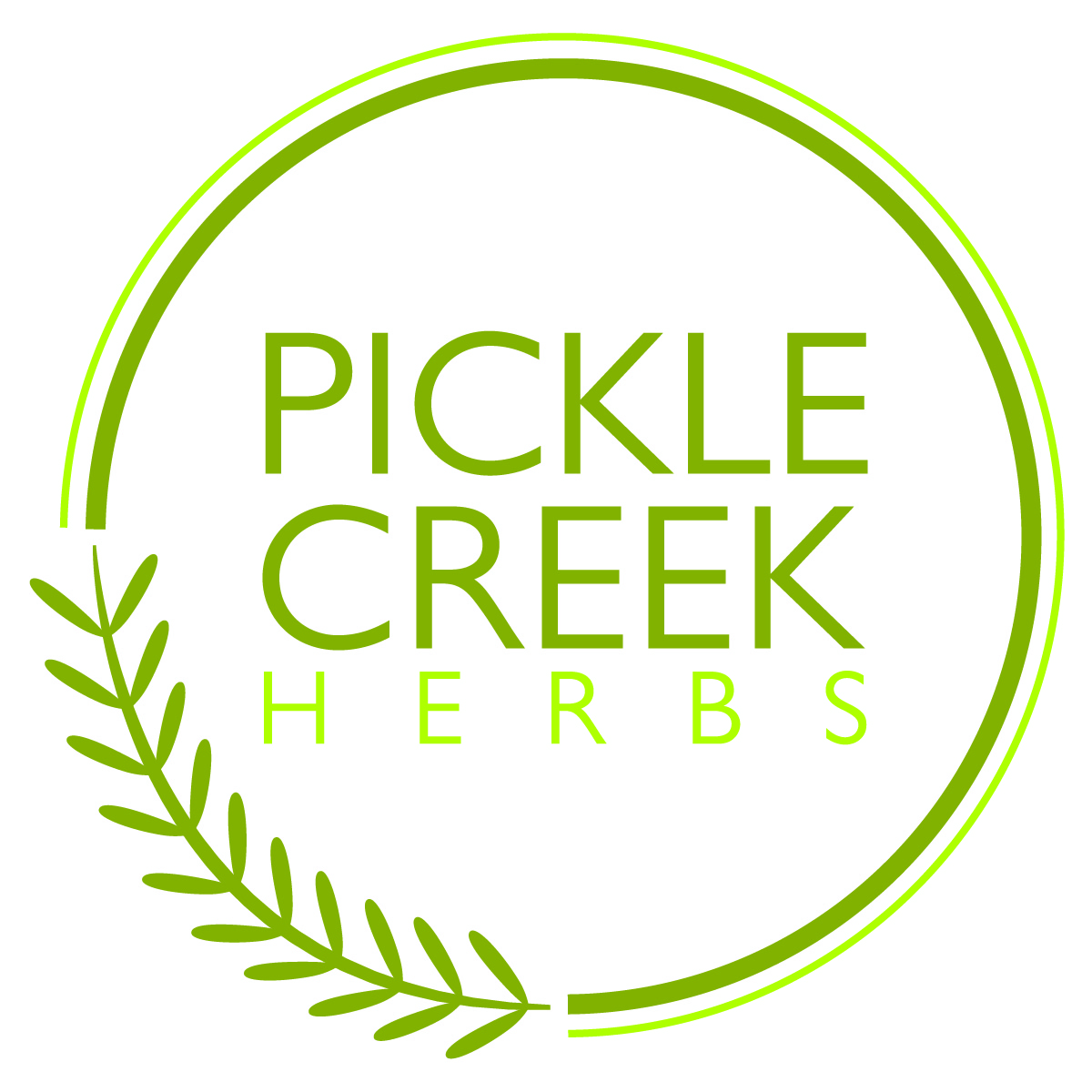Aloe was the third soap to join our market table (closely following Peppermint and Calendula). It’s been on our roster since 2006, the first year of Pickle Creek Herbs and the first year we strapped on the goggles and began mixing up small batches of cold-processed herbal lye soaps. Aloe is our personal shorthand for Aloe vera, a succulent plant that is one of 500+ members of the Aloe genus. Why did we start making Aloe soap? (Is Aloe vera even an herb?)
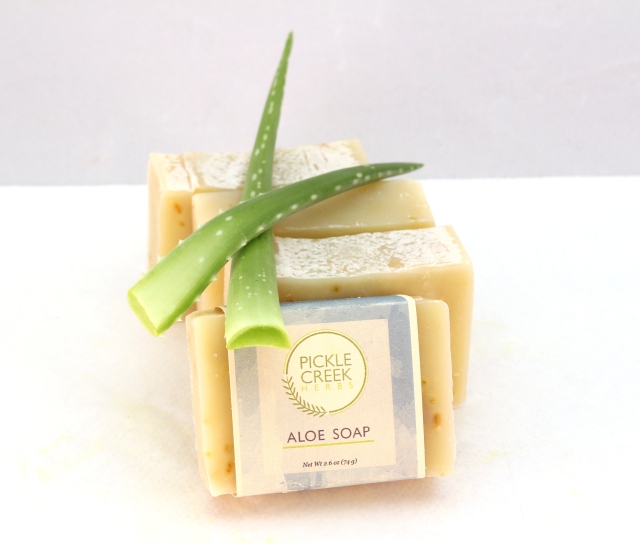
Sure, Aloe vera is an herb, depending on how you define herb, one of the more nebulous words in our English language. Hardcore botanists might argue that point, and I wouldn’t put up a fight–Aloe vera doesn’t meet the botany definition of an herb, which is a bit more restrictive. Semantics aside, however, Aloe vera has a prominent and longstanding place in traditional herbal medicine. Ancient Greek, Roman, Mexican, Egyptian, Chinese, and Indian civilizations all appreciated and used the Aloe vera plant in their healing arts. In fact, the Greeks regarded it as the universal cure-all, and the Egyptians went so far as to call it the plant of immortality.
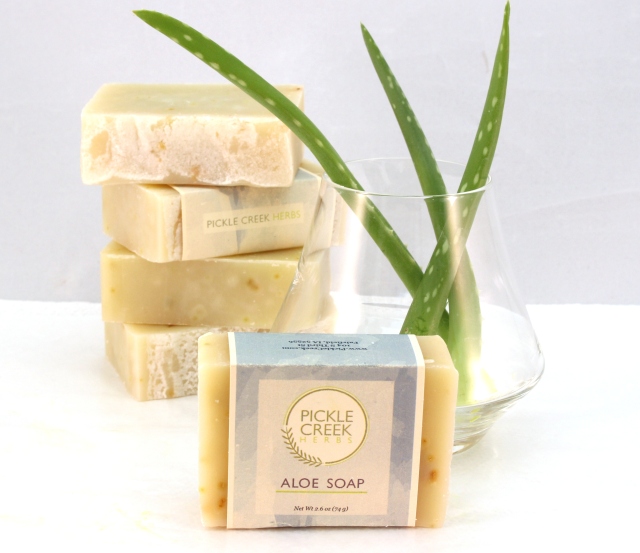
Today Aloe vera is better known as the burn plant. While we could use more and better controlled research studies to pin down the exact efficacy of Aloe vera, the existing research does suggest that there is scientific merit to its traditional use for soothing minor wounds, burns, and skin irritations. Also, Aloe vera leaves contain more than 75 different nutrients, including vitamins, minerals, enzymes, anthraquinones, lignin, auxins, gibberellins, saponins, sterols, amino acids, glucomannans, and salicylic acid, that are known to possess antioxidant, anti-inflammatory, and antibacterial properties. So it seems like this might be a good plant for dealing with skin issues. Perhaps that’s why in Ayurvedic medicine, Aloe vera is even used for chronic skin problems such as psoriasis, acne, and eczema.
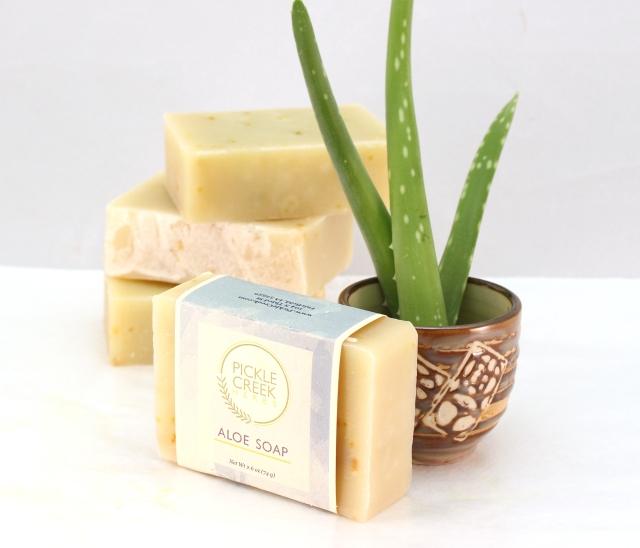
A major benefit of turning Aloe vera into a soap is that aloe moisturizes the skin without being greasy, so aloe soap is a good cleanser for anyone with an oily complexion. It’s also a good choice for removing facial makeup. Another reason aloe soap is good for the skin: The many antioxidants in Aloe vera leaves (which include beta carotene, vitamin C, and vitamin E) can improve the skin’s natural firmness and keep the skin hydrated. Translation: Aloe is anti-aging.

The truth is, though, that a major reason we started making our Aloe soap was the aloe was already there. Tim’s parents are avid gardeners who, even before we began gardening ourselves, were always giving us plants, one of which was Aloe vera. It seems like we’ve always had aloe plants around, which we really grew to appreciate once we began working in the greenhouse (where sunburns are somewhat of an occupational hazard). When we make our Aloe soap, we cut a couple of aloe leaves right off the plant and blend them into the soap mixture right before trace, which is the last possible moment you can add an ingredient to a cold-processed soap before it hardens too much to stir. Adding fresh aloe at trace helps ensure that we preserve the natural nutrients found in the fresh aloe leaves.
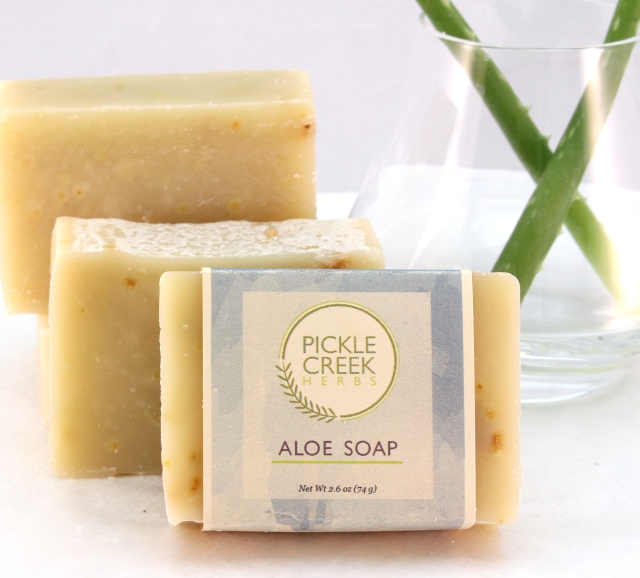
Within its first year our Aloe soap gained a dedicated following. People were calling to say, “That is wonderful soap. I’m pretty much rash free for the first time in probably 2 years!” We decided we’d better keep on making it. And so, 10 years later, here are our Portraits of Aloe Soap!
We would love to hear from you! What do you think? Which photo best captures the spirit of
Pickle Creek’s Aloe soap?!
